Techno Box 16
High-Performance, Twin-Engine,
Multi-Purpose Helicopter
BK117 D-2
![]()
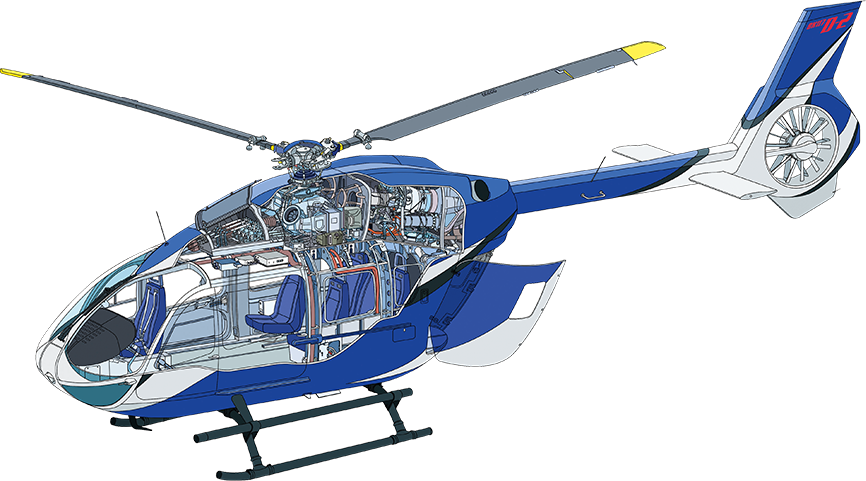
A “new face” accommodating
the needs of Japanese rescuers
The BK117 is a series of helicopters that Kawasaki began developing in 1977, in an international joint project with Messerschmitt-Bölkow-Blohm (present-day Airbus Helicopters Deutschland [AHD]). Thanks to its excellent performance and safety features, this twin-engine, multi-purpose helicopter has been adopted widely by the police, fire fighting, the media, and emergency medical services.

The eighth generation of the series, the BK117 D-2 is the latest version, demonstrating even greater performance and reduced pilot workload compared to its predecessors.
Improvements were achieved through a new, computerized engine and a more sophisticated technology initially created by Kawasaki for use in the gear box, which transmits engine power to the main rotor.
As a result, Kawasaki was able to extend the hovering time at maximum gross weight, which requires the greatest horsepower, from the previous model’s five minutes to 30 minutes. This extension was made possible by Kawasaki’s determination to address the concerns of Japanese rescue squads that five minutes of hovering was not long enough for life-saving efforts involving multiple victims.
With an advanced Helionix avionics suite integrated with the four-axis autopilot, the D-2 reduces pilot workload significantly and offers higher safety performance. The adoption of the Fenestron tail rotor is another added advantage, achieving much quieter operation, making them more environmentally-friendly than other helicopters.
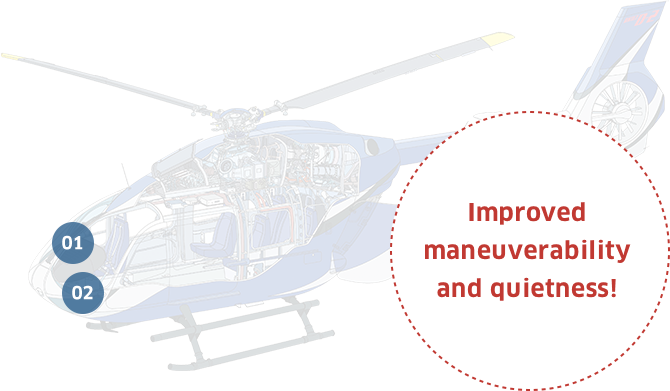

- 01The Helionix cutting-edge avionics suite
-
The BK117 D-2 is equipped with Airbus’ most advanced integrated modular avionics system, the Helionix. Cockpit displays are integrated into three 6x8" framed screens displaying flight and systems information, which can be made available instantly by pressing the bezel keys.
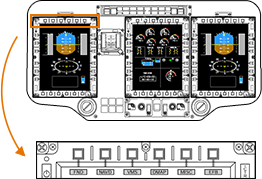
- 02Four-axis autopilot for safe operation
- The BK117’s four-axis autopilot controls the helicopter’s roll (tilting rotation of the helicopter body), pitch (up/down movement of the nose), yaw (left/right movement of the nose), and collective pitch (rotor thrust). Fifteen automatic flight control modes are available, which significantly reduces pilot workload.

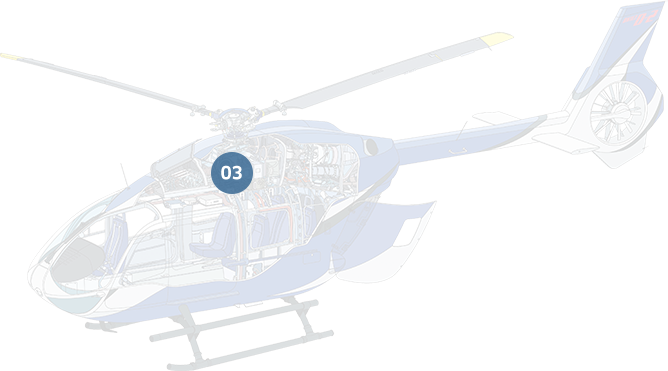
- 03Kawasaki’s innovative proposal:
an improved Main Gear Box (MGB) -
For the BK117’s transmission, Kawasaki proposed to Airbus certain changes to the tooth contact and the bearing material inside the main gear box (MGB). With these improvements, “running dry” at high temperatures as a result of loss of lubrication is possible, and with the use of the new engine, hovering performance was enhanced, which will drastically improve the efficacy of rescue activities.

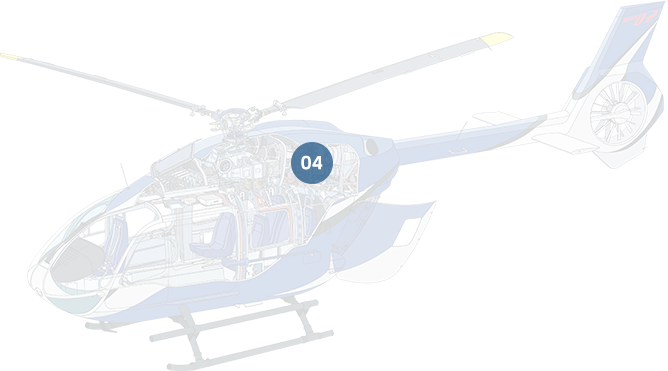
- 04A new Full Authority
Digital Engine Control (FADEC) engine -
For better performance and ease of maintenance, Kawasaki employed the computer-controlled Arriel 2E engine with FADEC, manufactured by Safran Helicopter Engines. The maximum gross weight is now 3,650 kg, up 65 kg from the previous model, and is planned to be increased to 3,700 kg (now under review by the Japan Civil Aviation Bureau). The weight of the engine was reduced by removing one turbine, and increased ease of maintenance was achieved via the computerized control and monitoring of the engine’s performance.

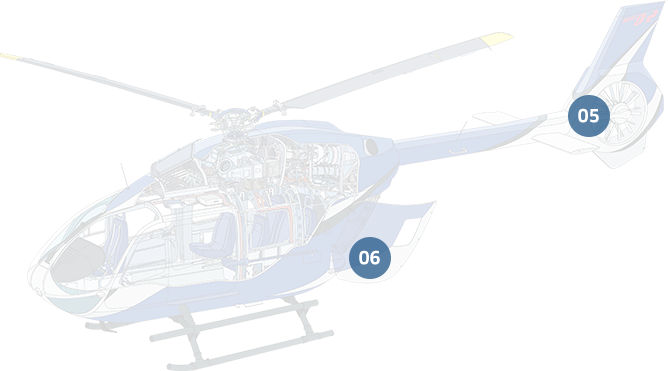
- 05New Fenestron tail rotor offers
quieter operation -
The tail rotor has been changed to the Airbus Fenestron (a “ducted fan”). Despite its small diameter, the Fenestron provides great thrust, is free from aerodynamic interference with the vertical stabilizer, and reduces the impact of the tail rotor on overall performance. Noise reduction is another advantage.

- 06Clamshell door
-
The most outstanding feature of the BK117 series is the clamshell door in the rear. The door facilitates loading/unloading of patients during medical emergencies, winning high acclaim for the BK117 from the medical sector.
The BK117 series’ cumulative deliveries amount to 1,304 units
The BK117 is one of the world’s best-selling helicopter series, with a total of 1,304 units* delivered between 1982 and June 2016, including 175 units that underwent final assembly in Japan. The series holds a 40% market share of Japanese emergency medical services.* Combined deliveries of Kawasaki Heavy Industries and Airbus Helicopters Deutschland.


Commentary
-
Assistant ManagerAtsushi Kitamura
Senior Staff Officer,
Project Section 2,
Helicopter Project Engineering Department I
Engineering Division, Aerospace Company
Kawasaki Heavy Industries, Ltd.


